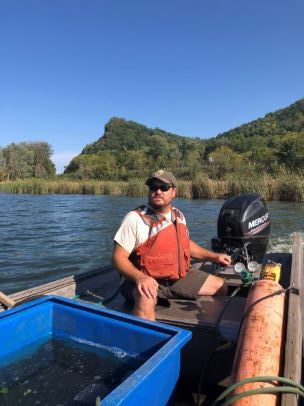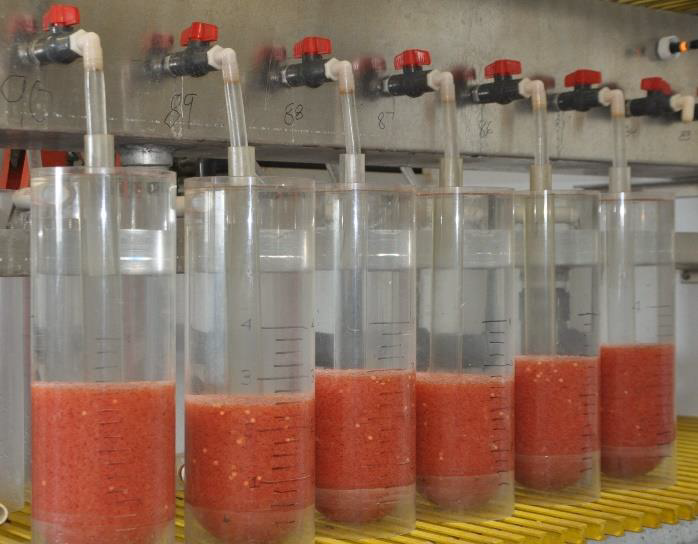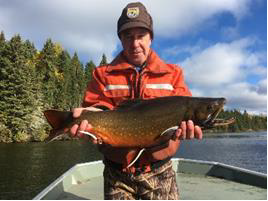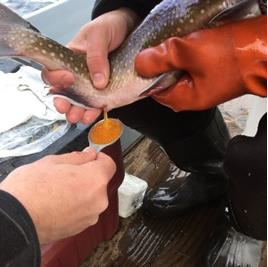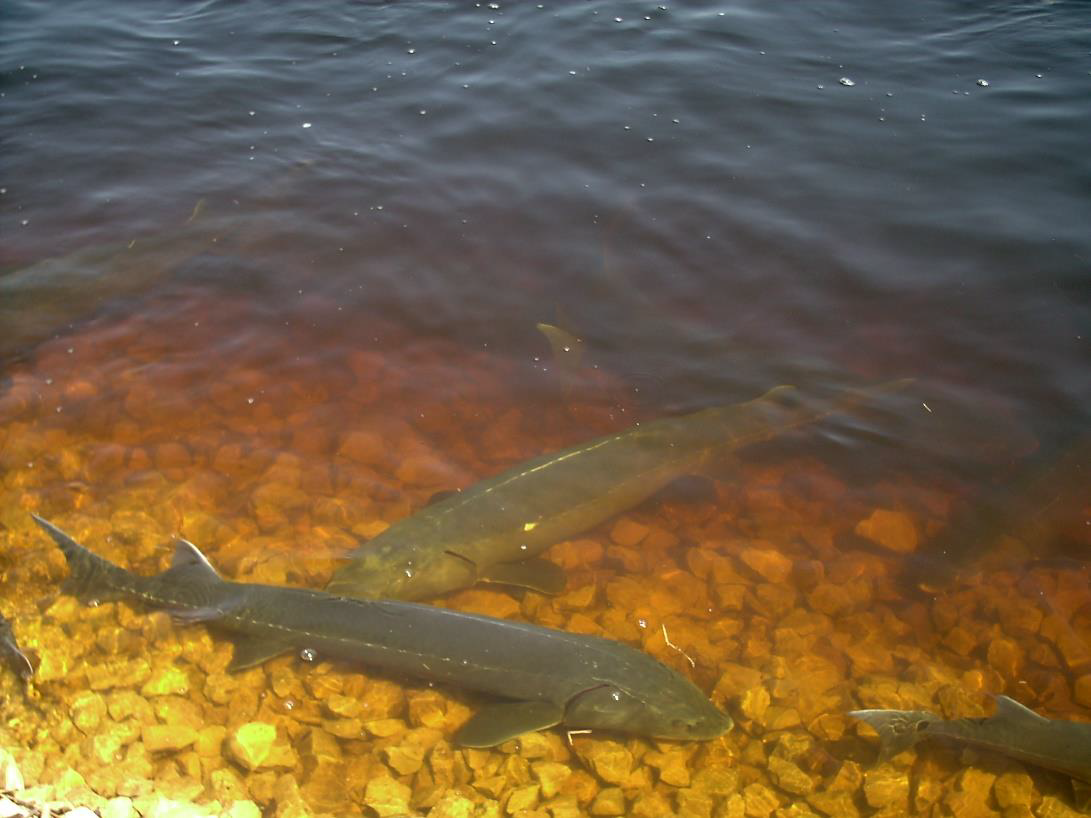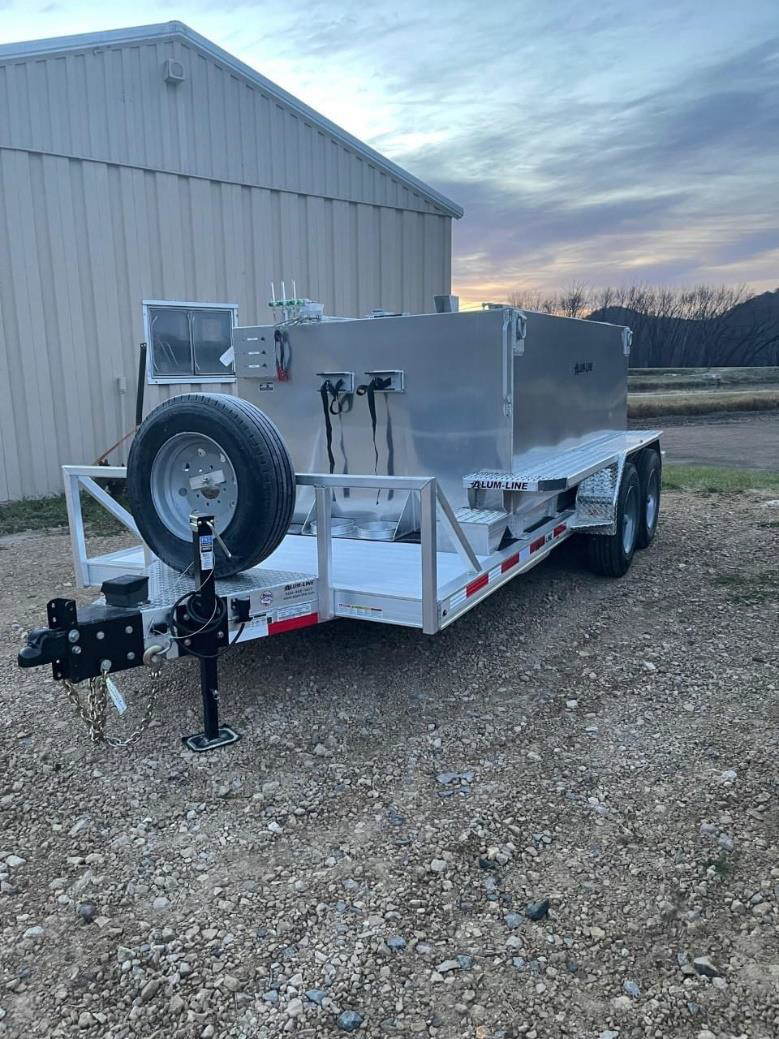Mid-winter is typically the slowest culture season at the hatchery, but that’s also when the Mussel Culture Building is at its most full. During the summer and fall growing season, we’re busy producing and culturing juvenile mussels in the MARS trailer at Blackhawk Park, in collaboration with staff and volunteers with the National Mississippi River Museum and Aquarium in Dubuque, and in cages in GNFH ponds and other bodies of water. But at the end of the growing season, all of the newly produced mussels that weren’t large enough to be stocked into rivers are brought to the mussel building for winter culture. These juvenile and young ‘sub-adult’ mussels, which often number in the thousands, are kept in a flow-through system of rearing pans or in floating baskets in a raceway.

The mussel building in the winter. Photo: Beth Glidewell/USFWS.
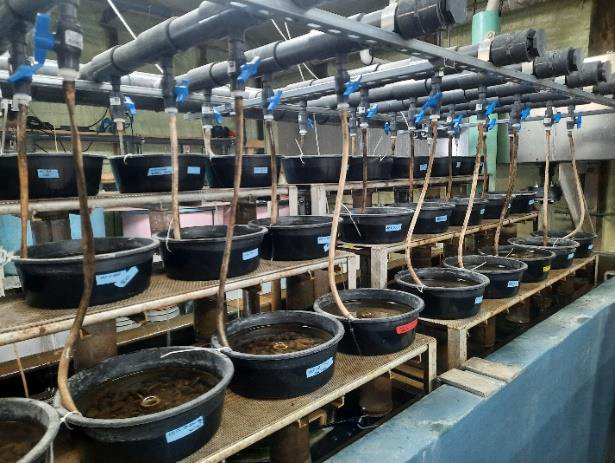
Photo: Fully occupied Rearing Pan System, with flow-through pond water delivered to each pan. Photo credit: Beth Glidewell/USFWS.
Well water from other points at the hatchery still flows through ponds and culture buildings throughout the winter, providing the mussel building with ‘naturalized’ pond water at environmental temperatures (currently about 38-40°F). This pond water contains sufficient algal and bacterial nutrients to sustain mussels acclimated to winter temperatures. Maintaining these cultures through the winter involves weekly to bi-weekly cleaning of the pans, and daily checks that there is sufficient flow to each pan. With Wisconsin winter temperatures outside and a heated building, there is a balance of keeping the cold water flowing through the system—not freezing in the pipes or flow insufficient to keep the system from warming to inside room temperatures. It is a team effort to maintain this water supply, keep pumps operating, pipes unfrozen, and filter screens unclogged.
In addition to juvenile and sub-adult mussels, adult female mussels that were collected last fall to be used as next season’s broodstock are housed over winter in a raceway in the Mussel Building, too. Some mussel species are considered ‘long-term brooders’, where their natural reproductive pattern is to spawn in the late summer or fall and hold the eggs that develop into larvae the female’s marsupial gills until the spring when natural infestation of host fish would occur just as waters are warming. The Federally Endangered Higgin’s Eye Pearlymussel is one of a number of mussels that follow this pattern. For mussel production, we use this natural timing to collect gravid females in the fall when river conditions are conducive to SCUBA diving or snorkeling, house them over winter, and have viable glochidia at hand early in the spring, when it’s seasonally time to inoculate host fish, but river conditions (with variable spring thaw influences) are likely not as conducive to SCUBA as they were in the fall. Not all mussel species are long-term brooders, short term brooders such as the Federally Endangered Sheepnose and Winged Mapleleaf require temporally very specific collection efforts in mid-summer and early fall, respectively.
Maintenance of these winter cultures will continue through the winter and early spring, until growing season culture system can be set up in late May or June, when spring floodwaters begin to recede.
By: Beth Glidewell
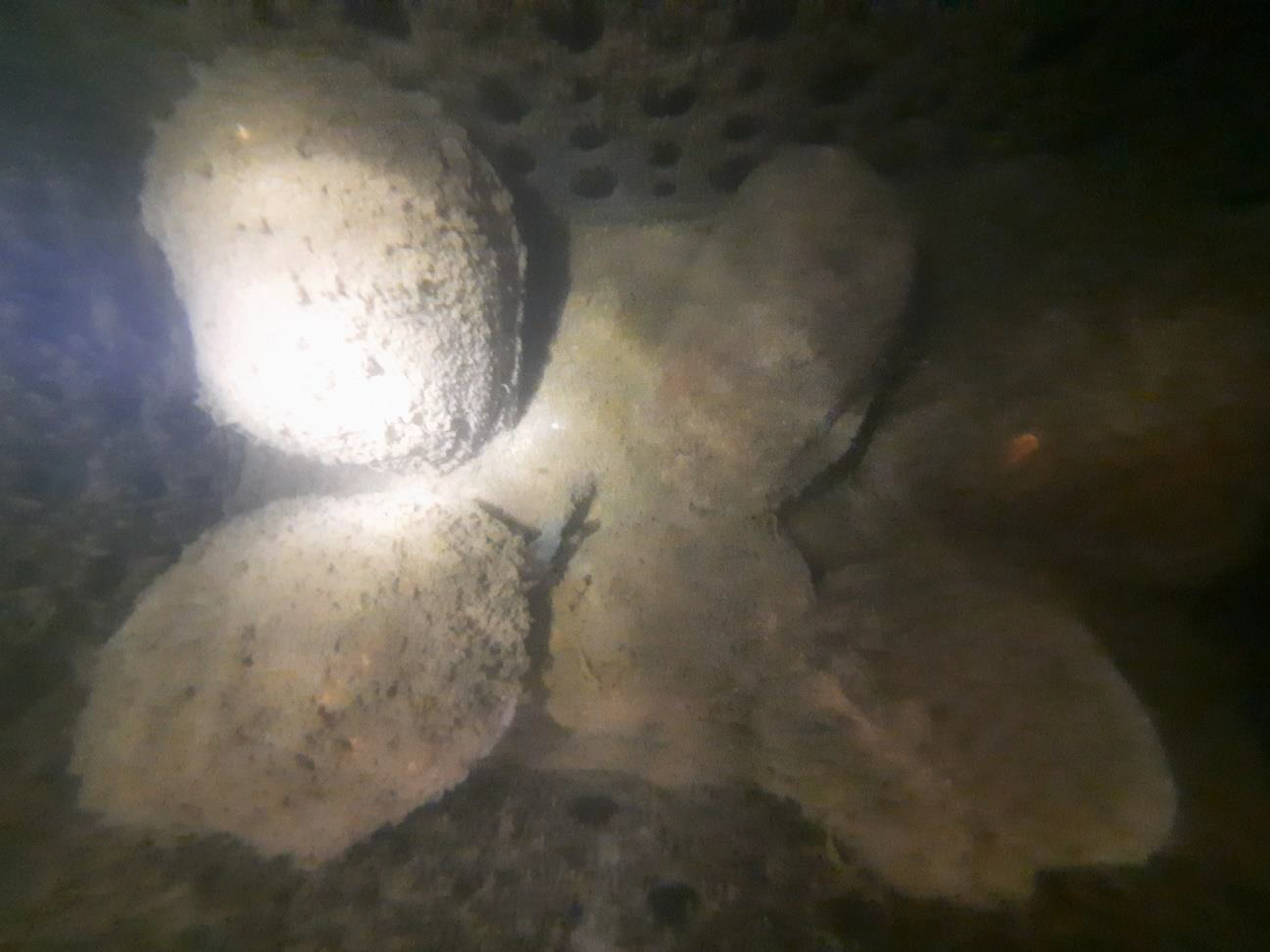
Photo: Overwintering broodstock mussels in a raceway. Photo: Beth Glidewell/USFWS.
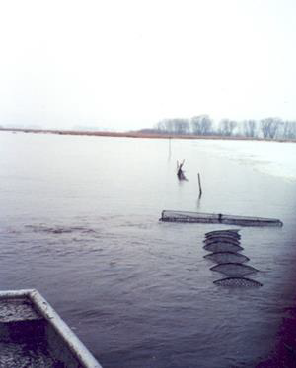
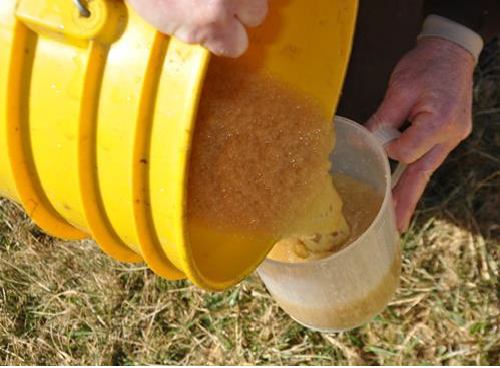 Hoop net in water and pike eggs being measured. Photo: USFWS
Hoop net in water and pike eggs being measured. Photo: USFWS
